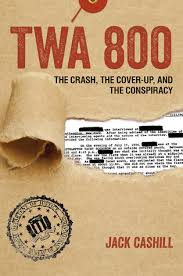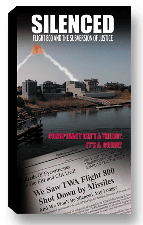The Big Lie in Jay-Z’s Trayvon Series: Part II
Jack Cashill's Big Lie in Jay-Z's Trayvon Series:
![]()

Order Jack Cashill's latest book, TWA 800: The Crash, the Cover-Up, and the Conspiracy
![]()

About Silenced: Flight 800
and the Subversion
of Justice (DVD) -
-Buy the Silenced DVD-
![]()
© Jack Cashill
August 8, 2018 - WND.com
It is hard to choose among the many deceptions in the second episode of Shawn “Jay-Z” Carter’s six-part documentary series, “Rest in Power: The Trayvon Martin Story.”
For the second week in a row the producers edited out George Zimmerman’s “okay” response to the police request that he stop following Trayvon Martin, but this is small beer compared to one shameful omission that leaps out at the knowing viewer.
Early in this second episode, in an effort to explain the black community’s hostility to the Sanford Police Department, the producers show the video of a black homeless man being punched by the white son of a police lieutenant.
The incident took place in 2011, less than a year before George Zimmerman shot Trayvon Martin. Here is how George Zimmerman describes what happened next in his yet to be published memoir:
The homeless man had a name, Sherman Ware. I got to know it well. For reasons that will soon become obvious, America would not. The media would suppress the whole “Sherman Ware” story in a conscious effort to erase every good deed I had ever done.
After watching the video of the beating, I searched for more information. There wasn’t much. The white man, Justin Collison, was the son of a Sanford police lieutenant and grandson of a prominent Seminole County Judge.
It saddened me that so little attention was being paid. The incident caused not a blip on the media's radar, not even in Sanford. I remember thinking to myself, ‘It was caught on video, for crying out loud.’
I did more research and discovered that Collison had quite a few offenses that were never prosecuted. More disturbing, no one in authority even acknowledged the crime he committed against Ware.
Just wanting to be a good citizen, I printed up fliers on yellow fluorescent paper urging citizens of Sanford to attend the next town hall meeting and ask that Mr. Ware’s attacker be held accountable.
I distributed these fliers on four consecutive Sundays outside black churches. With interest in the case building, I took to the floor of a municipal meeting and said, "I would just like to state that the law is written in black and white. It should not and cannot be enforced in the gray for those that are in the thin blue line."
The publicity worked. Collison was arrested for the crime, and Police Chief Brian Tooley was forced to resign for his role in covering it up. I had headlined the fliers with a famous quote from Irish statesman Edmund Burke: “The only thing necessary for the triumph of evil is for good men to do nothing.”
Zimmerman was not making this up. There is an audio of his impassioned plea on Ware’s behalf at the municipal meeting in question.
As further proof, a judge dismissed Zimmerman’s later defamation lawsuit against NBC, claiming he had made himself a public figure by "voluntarily injecting his views into the public controversy surrounding race relations and public safety in Sanford.” She was referring to the Sherman Ware incident.
In the Jay-Z documentary, the viewer is told only that it took “three weeks of public outcry” to get justice for the homeless man. True to form, there is no mention at all of Zimmerman’s role in leading the crusade to get him justice.
Two weeks into this series, the viewer has no idea of Zimmerman’s mentoring of two black teens, his work with the homeless, his open support for Barack Obama, or even his Hispanic roots.
Zimmerman had been named after his uncle Jorge. Had he been named Jorge instead of George, the story would never have left Sanford. In a battleground state, in an election year, the media would have wanted no piece of a story in which a “Jorge” shot a “Trayvon.”
Had Jay-Z and his producers told the real story of Zimmerman and Sherman Ware, they could not have portrayed Zimmerman the way they do, namely as a representative of America’s gun toting, far right.
To reinforce this image, they are constantly injecting imagery of confederate flags and Nazi symbolism from incidents that had nothing to do with Zimmerman or his trial.
“If you leave out absolutely everything that might give your ‘narrative’ a problem and throw in any old rubbish that might support it, and you don’t even care that one bit of rubbish flatly contradicts the next bit, and you give no chance to those who might differ, than you have betrayed your craft,” wrote the late Christopher Hitchens in his review of Michael Moore’s Fahrenheit 911.
Had Hitchens lived to see Jay Z’s s treacherous “Rest in Power,” he would not have been that kind.
____
Jack Cashill's Big Lie in Jay-Z's Trayvon Series:

Jack Cashill is the author of If I Had A Son: Race, Guns, and the Railroading of George Zimmerman.
